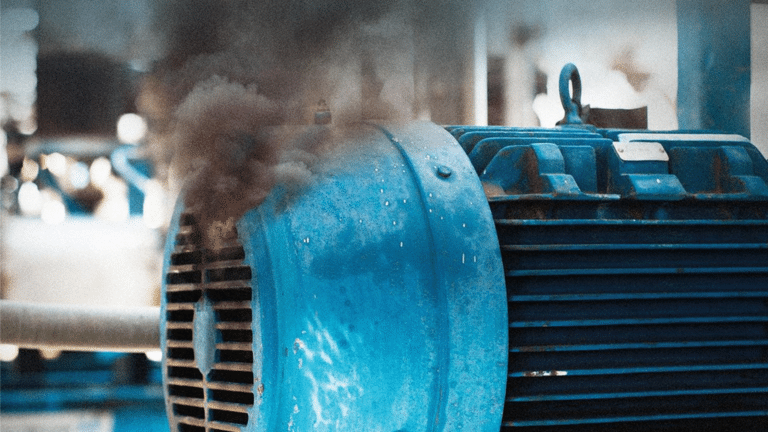Lubrication management is an essential aspect of maintaining and prolonging the life of machinery and equipment in any industry. However, it can also be a time-consuming and labor-intensive task. That is where lubrication management software comes in. This technology provides a way to streamline and automate the lubrication management process, leading to increased efficiency and cost savings. In this post, we’ll explore the many benefits of lubrication management software and how it is different from other tools.
How Lubrication Management Software Supports Your Team
You may think that only maintenance managers or lubrication technicians will have a use for lubrication management software. However, maintenance planners and schedulers need tools to create effective plans and routes. To reduce expenses and the risk of cross-contamination, maintenance managers must use systems to monitor lubricant usage. To make judgments based on lubricant condition monitoring and assess potential equipment improvements, reliability engineers require reliable data. We dive deeper into how lubrication management software supports everyone on your team below.
Maintenance Manager
Maintenance managers carry the weight of responsibility for all of your facility’s assets. They must keep an eye on activities, costs, components, lubricants, and other factors. To do so, they must rely on a crew of maintenance personnel that are suitably skilled and equipped. The manager relies on the team, but the team relies on the skills and resources at their disposal. Because managers can’t be everywhere at once, they can guide their team through even basic daily tasks with the use of lubrication management software.
For example, the maintenance manager can build out the steps for various tasks, even adding visual examples. This ensures every team member follows the company’s standard operating procedures and best practices. Additionally, the software allows technicians to easily record and track essential data such as inspection results, route compliance, lubricant consumption, and more. Then, the streamlined reporting dashboard and automated alerts help managers quickly see how everything is doing and what needs their attention.
Maintenance Planner
As a maintenance planner, it’s crucial to effectively organize work tasks in order to predict probable delays and then plan the components, personnel, and resources required to increase productivity. Planning lubrication activities necessitates a thorough knowledge of the ongoing requirements of each machine, as well as input from inspections and other condition monitoring discoveries to initiate on-condition actions. Your maintenance planners can easily accomplish this with lubrication management software.
Maintenance Scheduler
Maintenance schedulers regularly have to manage repeating lube route tasks, such as ultrasonic bearing regreasing at different intervals. If your scheduler is working with the limitations of paper or spreadsheet-based scheduling, this task will be even more difficult. To do their job effectively, they need to be able to integrate data, view schedules in various formats, and quickly adjust the schedule to suit the assets and the technicians. With lubrication management software, these changes are automatically available on the technician’s mobile device. This further saves your maintenance scheduler time from sending out emails, texts, or phone calls to alert technicians of the new schedule. Additionally, the software safeguards your schedule from easy mistakes, as the assigned tasks include all task information, asset data, photos, procedures, and more (depending on your configuration).
Reliability Engineer
The main lubrication challenge facing reliability engineers is implementing changes to control poor lubrication and contamination. Lubrication management software streamlines the process for them, as they can easily outline reliability best practices for any and every lubrication task. Furthermore, the software also assists with optimal lubricant selection, lubrication management processes, and machine changes for contamination control, inspections, sampling, filtration, and other operations.
Lubrication Technician
Keeping track of lubricant type, volume, and frequency of application across innumerable lubrication sites can be stressful for a lubrication technician. However, with lubrication management software, your technicians can get on-the-spot guidance through these details, all while tracking completions, usage, and inspection conditions. Additionally, lubrication management software enables your team to continue operating, even when lubrication technicians retire or are off sick. With all of the lube routes and asset information in the software, another team member can easily fill in or pick up where somebody else left off.
Why Do You Need a Dedicated Lubrication Management Software?
In industrial machinery, good lubrication is essential to reducing friction. As a result, frequent maintenance tasks like inspections and oil changes are crucial to maintaining lubrication. Nevertheless, basic errors are sometimes overlooked or misdiagnosed, such as when technicians relubricate bearings with incorrect grease or when contaminants enter an oil reservoir through an open port.
While small issues don’t lead to catastrophic failure overnight, they do add up with time. The effects of lubrication issues usually show up in three ways:
- Primarily silent at first before gradually snowballing into more major difficulties without a clear relationship to the underlying cause.
- Progressively diminish equipment output until component or machine failure.
- Gradually increase preventive maintenance, such as replacing bearings or oil more often.
These are not only expensive issues, but they are far too easy to overlook or underestimate their criticality. For a lubrication technician, operations like cleaning a circulating system before replacing incompatible lubricants might make the need for protocols and instructions more obvious. But as was already noted, even routine tasks need to be managed carefully to guarantee they follow best practices. For instance, it’s crucial to continuously know which lubricant to use, how much to use, where to apply it, what to look for during inspections, and other factors.
EAM vs. CMMS vs. Lubrication Management Tools
For the majority of industrial facilities, the benefits of optimizing maintenance procedures or increasing the value of your assets are vital. CMMS (Computerized Maintenance Management System) software or platforms are utilized by many to manage maintenance activities. Alternatively, you may use Enterprise Asset Management (EAM) software to manage the complete lifecycle of your assets. While most people generally perceive EAM and CMMS software as having overlapping features and applications, where does lubrication management software fall in the mix? We’ll clear up the uses and benefits for each below.
EAM and CMMS Software
Many popular CMMS functions, such as work order management and predictive maintenance, are also present in an EAM. In general, an EAM tends to be more comprehensive than a CMMS because it manages assets at a higher level. Choosing an EAM is typically a decision when a company reaches a specific staff size or when a more diverse collection of features is required. However, these new functions typically come with a cost. For instance, maintenance staff who appreciate a program structured and dedicated to more routine maintenance objectives frequently prefer a CMMS.
Lubrication Management Software
The same is true for lubrication. While you can manage lubrication through a CMMS, it is not built for the special requirements of lubrication. This is especially true when lubrication best practices are prioritized and machine adjustments are made to increase reliability. Different software solutions become increasingly relevant and advantageous at various organizational levels. A specialized management system focuses on these lubrication objectives at the plant floor and maintenance management levels to limit contamination, reduce lubricant cross-contamination, improve the dynamic routing of various intervals, monitor lubricant use and compliance, and more. Additionally, lubrication management software can integrate with your EAM or CMMS to have a complete view of your assets, work orders, and inventory.
Lubrication is a Vital Reliability Strategy
Oftentimes, if you have a lot of unplanned downtime because of lubrication issues, you will find it difficult to make the necessary changes. It calls for a shift in the general attitude toward adequate lubrication. However, it is worth the challenge! For decades, numerous companies have adopted successful lubrication campaigns as a winning strategy to lower costs, save time, and increase equipment reliability. If you’d like to see how lubrication management software could work for your team, schedule a demo today.


